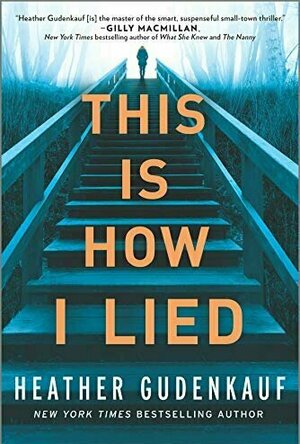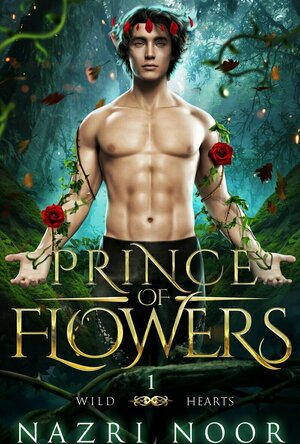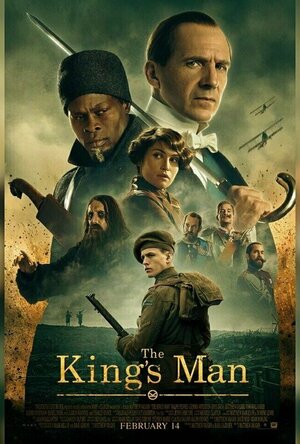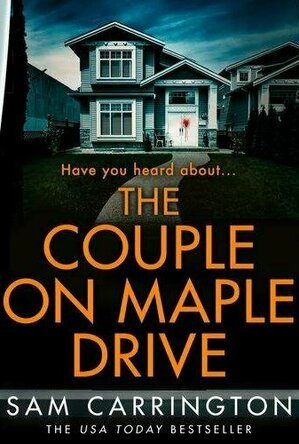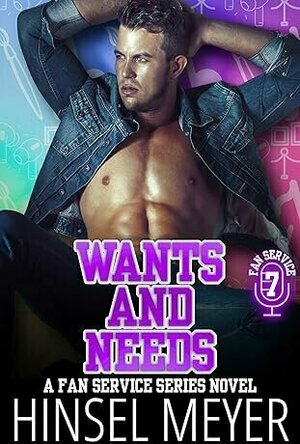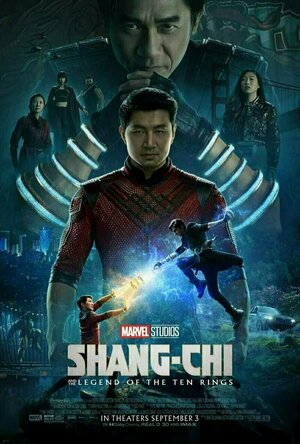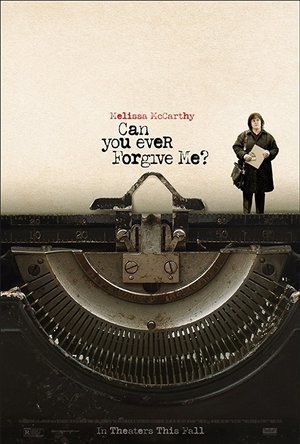Search
Search results

BLACKROLL® FASZIENTRAINING
Health & Fitness and Sports
App
Introduce more mobility, better health and performance into you daily life! In this APP you will...
Kristy H (1252 KP) rated This Is How I Lied in Books
May 21, 2020
This book was one of those delicious surprises that turns out to be so much better than you expect. I've never read a book by Heather Gudenkauf before, but I certainly will be reading more of her books now! I read this as I was sent a Netgalley widget, and I'm so glad! This is such a dark and twisty tale, and I loved how it kept me guessing the entire time, always wondering and doubting myself about what exactly happened to Eve.
Gudenkauf tells her tale from multiple perspectives and time periods, but unlike so many thrillers these days, she does so deftly. It's heartbreaking to hear from the Eve of twenty-five years ago, knowing her fate, yet fascinating, as she slowly dispenses details and clues about what has happened to her. Eve's younger sister is the "town crazy," a veterinarian with a penchant for extreme creepiness. We also have Maggie's even-keeled husband, Shaun, who runs their orchard (and did I mention Maggie is way pregnant?), her father, the ex-chief, who is suffering from dementia, and her brother, who has been forced to care for him. And lets not forget Eve's ex-boyfriend, Nick, who now runs a store in town.
The small-town dynamics are perfect here. Eve's murder is the biggest thing to happen to this town. Everyone knows everyone else, and they think they all know each other's secrets. But, goodness, the secrets and lies buried deep in this small town are just beginning as Maggie starts investigating Eve's death again. The story unfolds perfectly--new pieces coming at you in just the right amount, constantly changing the perspective and allowing suspects to switch around in your mind. Half the thrillers I read, I feel like I have the "whodunnit" figured out from the beginning, but I was never sure here, always frantically reading, always wondering, and being pulled deeply into Eve and Maggie's lives.
Overall, I really enjoyed this one. I loved the surprise of it--finding a book I didn't expect to be so good--and I loved being drawn into such a taunt well-written thriller. 4.5 stars.
Gudenkauf tells her tale from multiple perspectives and time periods, but unlike so many thrillers these days, she does so deftly. It's heartbreaking to hear from the Eve of twenty-five years ago, knowing her fate, yet fascinating, as she slowly dispenses details and clues about what has happened to her. Eve's younger sister is the "town crazy," a veterinarian with a penchant for extreme creepiness. We also have Maggie's even-keeled husband, Shaun, who runs their orchard (and did I mention Maggie is way pregnant?), her father, the ex-chief, who is suffering from dementia, and her brother, who has been forced to care for him. And lets not forget Eve's ex-boyfriend, Nick, who now runs a store in town.
The small-town dynamics are perfect here. Eve's murder is the biggest thing to happen to this town. Everyone knows everyone else, and they think they all know each other's secrets. But, goodness, the secrets and lies buried deep in this small town are just beginning as Maggie starts investigating Eve's death again. The story unfolds perfectly--new pieces coming at you in just the right amount, constantly changing the perspective and allowing suspects to switch around in your mind. Half the thrillers I read, I feel like I have the "whodunnit" figured out from the beginning, but I was never sure here, always frantically reading, always wondering, and being pulled deeply into Eve and Maggie's lives.
Overall, I really enjoyed this one. I loved the surprise of it--finding a book I didn't expect to be so good--and I loved being drawn into such a taunt well-written thriller. 4.5 stars.
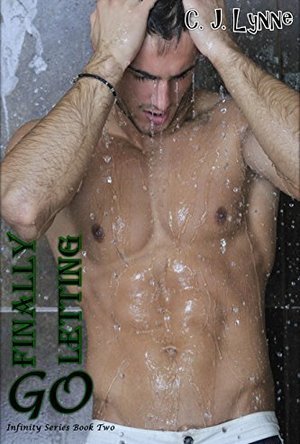
Finally Letting Go (Infinity #2)
Book
Take What You Want... Brandon Rosen is a man who refuses to admit what he wants—namely, a life...
male/male romance five stars fan yourself its a hot one!
Merissa (13443 KP) rated Prince of Flowers (Wild Hearts #1) in Books
Oct 13, 2022
PRINCE OF FLOWERS is the first book in the Wild Hearts series and we are introduced to a world that is both contemporary and magical. It was a little weird to start with when Playstations are being discussed but it soon turned to the magical side, and all was right for me.
I say for me because it certainly wasn't for Sylvain. Locke is a summoner, a super senior summoner as he has been at Wispwood for years. His father was a big name and it's a lot for him to live up to but, to be honest, it didn't sound as though he was that bothered about doing the work either. Yes, he wants his Summoner's Crest but the only reason that is mentioned is so he can get his hands on his inheritance.
He summons Sylvain and can't understand why Sylvain is a bit perturbed. Sylvain, quite rightly, wants to know what's going on and why. The "Humanoids" have been summoned in the past, but it isn't common," line didn't sit that well with me. It didn't seem quite right. Maybe that's just me.
The spark is there between the two of them from the start - although whether it is attraction or being contrary to each other is up to you to figure out. I did enjoy how they worked things out and ended up working together.
I really did enjoy this book and certainly want to continue with the series. I am hopeful that in subsequent books we will get more world- and character-building than we got here. Although there was some, it just didn't feel as though it was enough. I want to know more about the magical side, about Locke's relationship with his father, about where his father went, about Evander Skink, so much more!
All in all, this was a great read and a brilliant start to a new series. Individual and quirky, I have no hesitation in recommending it.
** same worded review will appear elsewhere **
* A copy of this book was provided to me with no requirements for a review. I voluntarily read this book, and the comments here are my honest opinion. *
Merissa
Archaeolibrarian - I Dig Good Books!
I say for me because it certainly wasn't for Sylvain. Locke is a summoner, a super senior summoner as he has been at Wispwood for years. His father was a big name and it's a lot for him to live up to but, to be honest, it didn't sound as though he was that bothered about doing the work either. Yes, he wants his Summoner's Crest but the only reason that is mentioned is so he can get his hands on his inheritance.
He summons Sylvain and can't understand why Sylvain is a bit perturbed. Sylvain, quite rightly, wants to know what's going on and why. The "Humanoids" have been summoned in the past, but it isn't common," line didn't sit that well with me. It didn't seem quite right. Maybe that's just me.
The spark is there between the two of them from the start - although whether it is attraction or being contrary to each other is up to you to figure out. I did enjoy how they worked things out and ended up working together.
I really did enjoy this book and certainly want to continue with the series. I am hopeful that in subsequent books we will get more world- and character-building than we got here. Although there was some, it just didn't feel as though it was enough. I want to know more about the magical side, about Locke's relationship with his father, about where his father went, about Evander Skink, so much more!
All in all, this was a great read and a brilliant start to a new series. Individual and quirky, I have no hesitation in recommending it.
** same worded review will appear elsewhere **
* A copy of this book was provided to me with no requirements for a review. I voluntarily read this book, and the comments here are my honest opinion. *
Merissa
Archaeolibrarian - I Dig Good Books!
Gareth von Kallenbach (980 KP) rated The King's Man (2021) in Movies
Dec 14, 2021
After being delayed multiple times from a planned November 2019 release; Writer/Director Matthew Vaughn has released the third film in the “Kingsman “film series with “The King’s Man”. This time around the movie looks back to the origins of the society dedicated to peace and solving global conflicts before they can escalate.
In pre-World War I Europe; wealthy pacifist Orlando Oxford (Ralph Finnes); looks to raise his son Conrad (Harris Dickinson); following the tragic loss of his wife some years earlier on a Red Cross mission.
When events kick off the war; Conrad wishes to enlist and fight and his father is able to keep this from happening as he wants his son to avoid the horrors of war. At the same time; a secret Cabal has been plotting to start the war and manipulate the outcome and one of the agents named Rasputin (Rhys Ifans); looms prominently due to his influence over the Czar of Russia.
As the years pass and the war unfolds; Conrad and Orlando soon find themselves at odds and being pulled into opposite directions which sets a chain of events into action and puts the fate of the world in the balance.
The film is at times more retrained than the prior two films but the action sequences when they arrive are entertaining and mix the humor and violence that the series is known for. The cast is solid and the way that historical events were used but given an alternate perspective really added to the enjoyment of the film.
The movie does have a decent amount of humor but does spend a great deal of time on character development and exposition which can lead to some long gaps between the action, but the engaging stories and characters hold your interest throughout.
The film sets up further adventures in the Prequel timeline well and it appears that this is the direction that future films may go which would be more than fine as the film delivered what fans have come to expect from the series.
4 stars out of 5
In pre-World War I Europe; wealthy pacifist Orlando Oxford (Ralph Finnes); looks to raise his son Conrad (Harris Dickinson); following the tragic loss of his wife some years earlier on a Red Cross mission.
When events kick off the war; Conrad wishes to enlist and fight and his father is able to keep this from happening as he wants his son to avoid the horrors of war. At the same time; a secret Cabal has been plotting to start the war and manipulate the outcome and one of the agents named Rasputin (Rhys Ifans); looms prominently due to his influence over the Czar of Russia.
As the years pass and the war unfolds; Conrad and Orlando soon find themselves at odds and being pulled into opposite directions which sets a chain of events into action and puts the fate of the world in the balance.
The film is at times more retrained than the prior two films but the action sequences when they arrive are entertaining and mix the humor and violence that the series is known for. The cast is solid and the way that historical events were used but given an alternate perspective really added to the enjoyment of the film.
The movie does have a decent amount of humor but does spend a great deal of time on character development and exposition which can lead to some long gaps between the action, but the engaging stories and characters hold your interest throughout.
The film sets up further adventures in the Prequel timeline well and it appears that this is the direction that future films may go which would be more than fine as the film delivered what fans have come to expect from the series.
4 stars out of 5
Hazel (2934 KP) rated The Couple on Maple Drive in Books
Dec 11, 2021
Only my second foray into the world of audiobooks and, once again, I have not been disappointed.
From the off, you are drawn into a situation being told via a live Podcast from Christie's Crime Addicts; something awful has happened on Maple Drive but the "what" isn't clear. The story then presents the "whens" and "whys" leading up to the "situation" interspersed with more Podcasts. This does sound like it's going to be a tad confusing but let me reassure you, it most certainly isn't; it flows really well and makes perfect sense.
The characters are an interesting bunch but not so many that you become confused. Isla is, I admit, a little annoying and naïve; you want to shout and shake her and soothe and swaddle her in equal measure but considering what she has been through and what transpires, she can be forgiven and with friends like Nikki, you don't need enemies!
The story moves on at a good pace gradually ramping up the tension as it goes until the slightly unexpected ending; I say slightly as I had already guessed one of the twists but this was then turned on it's head when another came along ... I love it when that happens!
As this was an audiobook, I must mention the narrators which, I think, were excellent with the main narrator really drawing you in with her voice. I also enjoyed the Podcasts being narrated by different voices of the Christie's Crime Addicts team, I don't think they would have had such an impact on the story if they had been by the same narrator so a stroke of genius there I feel.
Overall, The Couple on Maple Drive is an intriguing story that I thoroughly enjoyed and certainly made my car journeys much more enjoyable so much so that I didn't want to stop the book when I come to the end of my travels and there were a few times when I sat there, parked up with the engine off for just one more chapter!
Thank you to HarperCollins UK Audio and NetGalley for my copy in return for an honest, unbiased and unedited review.
From the off, you are drawn into a situation being told via a live Podcast from Christie's Crime Addicts; something awful has happened on Maple Drive but the "what" isn't clear. The story then presents the "whens" and "whys" leading up to the "situation" interspersed with more Podcasts. This does sound like it's going to be a tad confusing but let me reassure you, it most certainly isn't; it flows really well and makes perfect sense.
The characters are an interesting bunch but not so many that you become confused. Isla is, I admit, a little annoying and naïve; you want to shout and shake her and soothe and swaddle her in equal measure but considering what she has been through and what transpires, she can be forgiven and with friends like Nikki, you don't need enemies!
The story moves on at a good pace gradually ramping up the tension as it goes until the slightly unexpected ending; I say slightly as I had already guessed one of the twists but this was then turned on it's head when another came along ... I love it when that happens!
As this was an audiobook, I must mention the narrators which, I think, were excellent with the main narrator really drawing you in with her voice. I also enjoyed the Podcasts being narrated by different voices of the Christie's Crime Addicts team, I don't think they would have had such an impact on the story if they had been by the same narrator so a stroke of genius there I feel.
Overall, The Couple on Maple Drive is an intriguing story that I thoroughly enjoyed and certainly made my car journeys much more enjoyable so much so that I didn't want to stop the book when I come to the end of my travels and there were a few times when I sat there, parked up with the engine off for just one more chapter!
Thank you to HarperCollins UK Audio and NetGalley for my copy in return for an honest, unbiased and unedited review.
Merissa (13443 KP) rated Wants And Needs (Fan Service #7) in Books
Jul 18, 2025
WANTS AND NEEDS is the seventh and final book in the Fan Service series, although you can read it as a standalone, as I did. Did it impact my understanding of the characters and storyline? If I were being completely pedantic, then yes, but only because I kept getting Wolf and Hawk mixed up in my mind through not having read their books. Otherwise, a resounding no!
Carter is a sweet character whom we first meet in London, as he prepares to sell the family home. After he has completed that task, he catches a flight back to LA, where he saves a sixteen-year-old girl from the sleazy attentions of an older man. Her brother, Liam, is meeting her at the airport and is understandably concerned when he sees her being friendly with a man he doesn't know. Liam is also autistic and has some problems picking up facial expressions and social cues.
The slow-burn relationship between Carter and Liam was written so perfectly! Liam's version of autism was so clear, it made it easily understandable to anyone unfamiliar with it. And I say his version of it, because it isn't a one-size-fits-all situation. Carter's acceptance of Liam was pure, and I loved how he wasn't afraid to ask others for help when he didn't fully understand the situation or know what the best thing to do was.
This is the first book by this author I have read, and it won't be the last. If I don't read anything else, I need to read the other books in this series! I loved all of the characters and absolutely need to read their stories!!! If they are written half as well as this one is, I know I will love them all. HIGHLY RECOMMENDED by me.
** Same worded review will appear elsewhere. **
* A copy of this book was provided to me with no requirements for a review. I voluntarily read this book; the comments here are my honest opinion. *
Merissa
Archaeolibrarian - I Dig Good Books!
Jul 18, 2025
Carter is a sweet character whom we first meet in London, as he prepares to sell the family home. After he has completed that task, he catches a flight back to LA, where he saves a sixteen-year-old girl from the sleazy attentions of an older man. Her brother, Liam, is meeting her at the airport and is understandably concerned when he sees her being friendly with a man he doesn't know. Liam is also autistic and has some problems picking up facial expressions and social cues.
The slow-burn relationship between Carter and Liam was written so perfectly! Liam's version of autism was so clear, it made it easily understandable to anyone unfamiliar with it. And I say his version of it, because it isn't a one-size-fits-all situation. Carter's acceptance of Liam was pure, and I loved how he wasn't afraid to ask others for help when he didn't fully understand the situation or know what the best thing to do was.
This is the first book by this author I have read, and it won't be the last. If I don't read anything else, I need to read the other books in this series! I loved all of the characters and absolutely need to read their stories!!! If they are written half as well as this one is, I know I will love them all. HIGHLY RECOMMENDED by me.
** Same worded review will appear elsewhere. **
* A copy of this book was provided to me with no requirements for a review. I voluntarily read this book; the comments here are my honest opinion. *
Merissa
Archaeolibrarian - I Dig Good Books!
Jul 18, 2025
Charlie Cobra Reviews (1840 KP) rated Shang-Chi and the Legend of the Ten Rings (2021) in Movies
Sep 5, 2021
Superhero Epic With Emotional Family Drama And Gravity-Defying Martial Arts
In the past, Xu Wenwu (Tony Leung), Shang-Chi's father, used the Ten Rings, mystical weapons granting him immortality and power, to amass an army of warriors and topple kingdoms and governments alike. In the present Shang-Chi (Simu Liu) is just a regular guy working a dead end job as a valet with his best friend Katy (Awkwafina) and enjoying life. When he and Katy are attacked by the mysterious Ten Rings Organization, Shang-Chi must confront the past of his former life. A life he thought he left behind.
This movie was really great! I'm so glad I went to go watch it in theaters and on the first day before anybody spoiled anything for me. I hate people who do that. Anyways, this movie was an excellent addition to the MCU and I like the way it went about being it's own thing. It felt like they didn't have to try and adhere to being part of a shared universe and making things fit but at the same time there were plenty of Easter eggs and surprises sprinkled throughout. The film also managed to check a lot of boxes without feeling like they were forced. It had drama, really great action, killer fight scenes, and some comedy mixed in there. The movie felt a lot like the first Guardians of the Galaxy movie, especially in how it balanced the seriousness and lightness throughout the film. I liked the chemistry between the characters and thought the casting was perfect. The bus scene was one of my favorite parts of the movie and all the action that went on. If I had to say that there was a biggest flaw in the film it would probably be that they didn't really go too far into some of the lore involved but ultimately that didn't detract from it enough to be something major.
I liked the way the director chose to portray the events in the story and how it was a pretty cohesive plot and not all over the place. The pacing was done well and there was good use of flashbacks in certain scenes to move the plot. I felt like it was done well without turning into "info dumping" with character dialogue. The cinematography was great and seemed naturalistic and heightened. They definitely took advantage of filming on location in San Francisco with some scenes filmed in famous places such as Russian Hill, Noe Valley, Nob Hill and Fisherman's Wharf. The fight choreography in the movie is phenomenal. It's probably the best that there has ever been in a Marvel film and it shows. They got Brad Allen who had worked with Jackie Chan before, as the supervising stunt coordinator and he brought that physical comedy to the scenes where setups and stakes keep rising as do the payoffs. The tone of the movie was light but definitely had it's moments were it got darker however it never left it's core of being about family. The music was more contemporary and modern but with some musical score in the scenes where it fit really well but there was nothing that really stuck out as unique or compelling. The acting was pretty good with even Awkwafina showing a little bit of range with some dramatic scenes and not just comedy. Simu Liu was very convincing as Shang-Chi, both versions, the "average Joe" and the warrior. His father played by Tony Leung was also very good in his scenes from the ones showing the past to his interactions with Shang-Chi. You could really feel the tension between them. And of course Michelle Yeoh was just awesome!
The writing was good and dialogue never felt like somebody said something that was out of character or didn't fit right. The plot was never weak or boring. Although you could tell where it was going it had a little bit of mystery to it. The editing was done very proper and there were some good cuts of action scenes particularly the bus scene. I liked the one transition in the beginning from the tale of the past to the alarm clock. The costume designs were something that you usually don't remember in some films but this one had some really iconic ones that stuck out. For example that one masked blue ninja's outfit, as well as the other Ten Rings soldiers looked cool. Razor Fist's arm design was inventive also. There were so many outfits that come out later in the movie that just fit really well too. Although as cool and nice looking as Shang-Chi's costume was, I did think it could have been better. There were plenty of really cool set designs from the Ten Rings lair to a underground fight club in Macau but the one set piece that stole the show to me was this really ornate wooden carving that looked really intricate. You'll know the one when you see it. The special effects were really good and I couldn't really complain too much except that the movie did suffer from one of those things that happened towards the end like in Black Panther where they just used too much in a certain sequence and it looked bad in that particular part. I did have a favorite character in the movie but it'd be spoiling it if I said who it was, so I'll just say that they have exceptional "acting" skills. Anyways I give Shang-Chi and the Legend of the Ten Rings a 8/10 and it gets my "Must See Seal of Approval". You need to get out there and check this movie out this Labor Day Weekend.
This movie was really great! I'm so glad I went to go watch it in theaters and on the first day before anybody spoiled anything for me. I hate people who do that. Anyways, this movie was an excellent addition to the MCU and I like the way it went about being it's own thing. It felt like they didn't have to try and adhere to being part of a shared universe and making things fit but at the same time there were plenty of Easter eggs and surprises sprinkled throughout. The film also managed to check a lot of boxes without feeling like they were forced. It had drama, really great action, killer fight scenes, and some comedy mixed in there. The movie felt a lot like the first Guardians of the Galaxy movie, especially in how it balanced the seriousness and lightness throughout the film. I liked the chemistry between the characters and thought the casting was perfect. The bus scene was one of my favorite parts of the movie and all the action that went on. If I had to say that there was a biggest flaw in the film it would probably be that they didn't really go too far into some of the lore involved but ultimately that didn't detract from it enough to be something major.
I liked the way the director chose to portray the events in the story and how it was a pretty cohesive plot and not all over the place. The pacing was done well and there was good use of flashbacks in certain scenes to move the plot. I felt like it was done well without turning into "info dumping" with character dialogue. The cinematography was great and seemed naturalistic and heightened. They definitely took advantage of filming on location in San Francisco with some scenes filmed in famous places such as Russian Hill, Noe Valley, Nob Hill and Fisherman's Wharf. The fight choreography in the movie is phenomenal. It's probably the best that there has ever been in a Marvel film and it shows. They got Brad Allen who had worked with Jackie Chan before, as the supervising stunt coordinator and he brought that physical comedy to the scenes where setups and stakes keep rising as do the payoffs. The tone of the movie was light but definitely had it's moments were it got darker however it never left it's core of being about family. The music was more contemporary and modern but with some musical score in the scenes where it fit really well but there was nothing that really stuck out as unique or compelling. The acting was pretty good with even Awkwafina showing a little bit of range with some dramatic scenes and not just comedy. Simu Liu was very convincing as Shang-Chi, both versions, the "average Joe" and the warrior. His father played by Tony Leung was also very good in his scenes from the ones showing the past to his interactions with Shang-Chi. You could really feel the tension between them. And of course Michelle Yeoh was just awesome!
The writing was good and dialogue never felt like somebody said something that was out of character or didn't fit right. The plot was never weak or boring. Although you could tell where it was going it had a little bit of mystery to it. The editing was done very proper and there were some good cuts of action scenes particularly the bus scene. I liked the one transition in the beginning from the tale of the past to the alarm clock. The costume designs were something that you usually don't remember in some films but this one had some really iconic ones that stuck out. For example that one masked blue ninja's outfit, as well as the other Ten Rings soldiers looked cool. Razor Fist's arm design was inventive also. There were so many outfits that come out later in the movie that just fit really well too. Although as cool and nice looking as Shang-Chi's costume was, I did think it could have been better. There were plenty of really cool set designs from the Ten Rings lair to a underground fight club in Macau but the one set piece that stole the show to me was this really ornate wooden carving that looked really intricate. You'll know the one when you see it. The special effects were really good and I couldn't really complain too much except that the movie did suffer from one of those things that happened towards the end like in Black Panther where they just used too much in a certain sequence and it looked bad in that particular part. I did have a favorite character in the movie but it'd be spoiling it if I said who it was, so I'll just say that they have exceptional "acting" skills. Anyways I give Shang-Chi and the Legend of the Ten Rings a 8/10 and it gets my "Must See Seal of Approval". You need to get out there and check this movie out this Labor Day Weekend.
BankofMarquis (1832 KP) rated Can You Ever Forgive Me? (2018) in Movies
Nov 11, 2018
Strong performances eleveates this "Art House" film.
With not a whole lot of interest filling out the screens at the multi-plexes at this time, I thought I'd head to the "Art House" to check out Melissa McCarthy in CAN YOU EVER FORGIVE ME? This film is garnering strong Oscar buzz for McCarthy's performance and I figured I'd see for myself.
And...darn it all...after a slow start, it does turn into an Oscar worthy performance, after all.
Telling the true tale of writer Lee Israel (based on her memoir), CYEFM tells the story of Israel's descent into criminal behavior to make ends meet by forging literary documents from the past and selling them as the real deal.
Starring as Israel, McCarthy drops all the artifice and bluster that she usually brings to her comedic characters to bring us a "non-people" person (Israel's own words) who is down on her luck. I was a bit skeptical of this performance in the first half of the film for I thought she had fallen victim to the "comedian trying their hands at a serious role" syndrome, being WAY too serious and glum, without a hint of humor. But, in the 2nd half of the film, McCarthy really finds this character and we begin to see a fully formed 3 dimensional person emerging on the screen - warts and all. And, when Israel/McCarthy gives the speech that will be shown at her Oscar nomination, she shows that she is fully deserving of any accolades that might come her way. It is a strong, humanistic portrayal of a person trying to figure it out - and learning that the shortcut probably isn't the best way to go.
Aiding her in her journey - and in this film - is Richard E. Grant as Jack Hock, another lost soul trying to make it in this world while having a good time doing it. Grant has the "showier" of the 2 roles and he revels in his moments. I would be fine with Grant being nominated as well - it is that strong of a performance and balances McCarthy's character wonderfully.
I did have a problem with the first 1/2 of this film, mainly for I disliked the 2 main characters being portrayed, they are certainly NOT 2 people to root for and I felt the film was only showing 1 dimensional stereotypes, but once McCarthy and Grant devise the forgery scheme, the film - and the performances - get very interesting, and multi-layered, indeed.
Keep in mind that this is an "Art House" film, by that I mean "talky". There isn't a whole lot of action and a TON of atmosphere and dialogue, not the type of film for everyone, but for those of you who like this sort of thing, you'll be rewarded by strong performances that lifts this film to a higher level.
Letter Grade: B+
8 (out of 10) stars and you can take that to the Bank(ofMarquis)
And...darn it all...after a slow start, it does turn into an Oscar worthy performance, after all.
Telling the true tale of writer Lee Israel (based on her memoir), CYEFM tells the story of Israel's descent into criminal behavior to make ends meet by forging literary documents from the past and selling them as the real deal.
Starring as Israel, McCarthy drops all the artifice and bluster that she usually brings to her comedic characters to bring us a "non-people" person (Israel's own words) who is down on her luck. I was a bit skeptical of this performance in the first half of the film for I thought she had fallen victim to the "comedian trying their hands at a serious role" syndrome, being WAY too serious and glum, without a hint of humor. But, in the 2nd half of the film, McCarthy really finds this character and we begin to see a fully formed 3 dimensional person emerging on the screen - warts and all. And, when Israel/McCarthy gives the speech that will be shown at her Oscar nomination, she shows that she is fully deserving of any accolades that might come her way. It is a strong, humanistic portrayal of a person trying to figure it out - and learning that the shortcut probably isn't the best way to go.
Aiding her in her journey - and in this film - is Richard E. Grant as Jack Hock, another lost soul trying to make it in this world while having a good time doing it. Grant has the "showier" of the 2 roles and he revels in his moments. I would be fine with Grant being nominated as well - it is that strong of a performance and balances McCarthy's character wonderfully.
I did have a problem with the first 1/2 of this film, mainly for I disliked the 2 main characters being portrayed, they are certainly NOT 2 people to root for and I felt the film was only showing 1 dimensional stereotypes, but once McCarthy and Grant devise the forgery scheme, the film - and the performances - get very interesting, and multi-layered, indeed.
Keep in mind that this is an "Art House" film, by that I mean "talky". There isn't a whole lot of action and a TON of atmosphere and dialogue, not the type of film for everyone, but for those of you who like this sort of thing, you'll be rewarded by strong performances that lifts this film to a higher level.
Letter Grade: B+
8 (out of 10) stars and you can take that to the Bank(ofMarquis)
Hazel (1853 KP) rated The Road to Reckoning in Books
Dec 17, 2018
My rating: 2.5.
<i>I received this book for free through Goodreads First Reads.</i>
<i>The Road to Reckoning</i> is British author Robert Lautner’s debut western-style novel. Set in the 1830s it follows a young boy’s long journey home through the open lands of America.
Tom Walker, now an elderly (or so it suggests) man, is giving an account of what happened to him during the year 1837 when “my life began” at the age of twelve. Tom’s father was a salesman who often let his son accompany him on his trips to sell spectacles. So when he receives the opportunity to pitch a new type of pistol known as a revolving gun for Samuel Colt at the <i>Patent Arms Manufacturing Company</i>, he brings Tom with him on the road. Originally living in New York they set out on a journey of many miles over several days demonstrating and taking orders for the pistol. However a dangerous encounter with a man, Thomas, Heywood, and his gang leaves Tom alone and orphaned.
There are two main characters to this story with Tom naturally being one of them. The other is an aging ranger named Henry Stands who Tom insists on following as he is travelling in the direction of New York and Tom’s home. To begin with Stands is very reluctant to have Tom tailing him on his journey especially as it becomes evident that he would have to provide for the boy. Stands ends up abandoning him but has a change of heart and returns in time to prevent Tom from being sent to St John’s Orphan Asylum.
And so their journey continues with Stands becoming kinder and even fatherly towards Tom, saving his life on more than one occasion; and Tom becoming all the more bolder. However the entire time is the fear and knowledge that Thomas Heywood is searching for Tom with the intention of leaving him in the same situation as his father – dead.
I have not read many western-style novels, and those that I have read I did not enjoy much, but <i>The Road to Reckoning</i> was better than I was anticipating. The main character being only twelve years old made the storyline more emotional especially when taking into account the death of his father and his growing attachment to Henry Stands.
The novel was well written and, although fictional, had an essence of factual truth about it. Samuel Colt was a real life American inventor who founded the <i>Colt’s Patent Fire-Arms Manufacturing Company</i>, which produced the revolver for commercial use. The blurb claims that fans of <i>Cold Mountain</i> and <i>True Grit</i>, neither of which I have read, would enjoy this story. Obviously I cannot give my opinion on that but I would say that to get the most out of reading <i>The Road to Reckoning</i> having an interest in western-style literature would be beneficial.
<i>I received this book for free through Goodreads First Reads.</i>
<i>The Road to Reckoning</i> is British author Robert Lautner’s debut western-style novel. Set in the 1830s it follows a young boy’s long journey home through the open lands of America.
Tom Walker, now an elderly (or so it suggests) man, is giving an account of what happened to him during the year 1837 when “my life began” at the age of twelve. Tom’s father was a salesman who often let his son accompany him on his trips to sell spectacles. So when he receives the opportunity to pitch a new type of pistol known as a revolving gun for Samuel Colt at the <i>Patent Arms Manufacturing Company</i>, he brings Tom with him on the road. Originally living in New York they set out on a journey of many miles over several days demonstrating and taking orders for the pistol. However a dangerous encounter with a man, Thomas, Heywood, and his gang leaves Tom alone and orphaned.
There are two main characters to this story with Tom naturally being one of them. The other is an aging ranger named Henry Stands who Tom insists on following as he is travelling in the direction of New York and Tom’s home. To begin with Stands is very reluctant to have Tom tailing him on his journey especially as it becomes evident that he would have to provide for the boy. Stands ends up abandoning him but has a change of heart and returns in time to prevent Tom from being sent to St John’s Orphan Asylum.
And so their journey continues with Stands becoming kinder and even fatherly towards Tom, saving his life on more than one occasion; and Tom becoming all the more bolder. However the entire time is the fear and knowledge that Thomas Heywood is searching for Tom with the intention of leaving him in the same situation as his father – dead.
I have not read many western-style novels, and those that I have read I did not enjoy much, but <i>The Road to Reckoning</i> was better than I was anticipating. The main character being only twelve years old made the storyline more emotional especially when taking into account the death of his father and his growing attachment to Henry Stands.
The novel was well written and, although fictional, had an essence of factual truth about it. Samuel Colt was a real life American inventor who founded the <i>Colt’s Patent Fire-Arms Manufacturing Company</i>, which produced the revolver for commercial use. The blurb claims that fans of <i>Cold Mountain</i> and <i>True Grit</i>, neither of which I have read, would enjoy this story. Obviously I cannot give my opinion on that but I would say that to get the most out of reading <i>The Road to Reckoning</i> having an interest in western-style literature would be beneficial.
